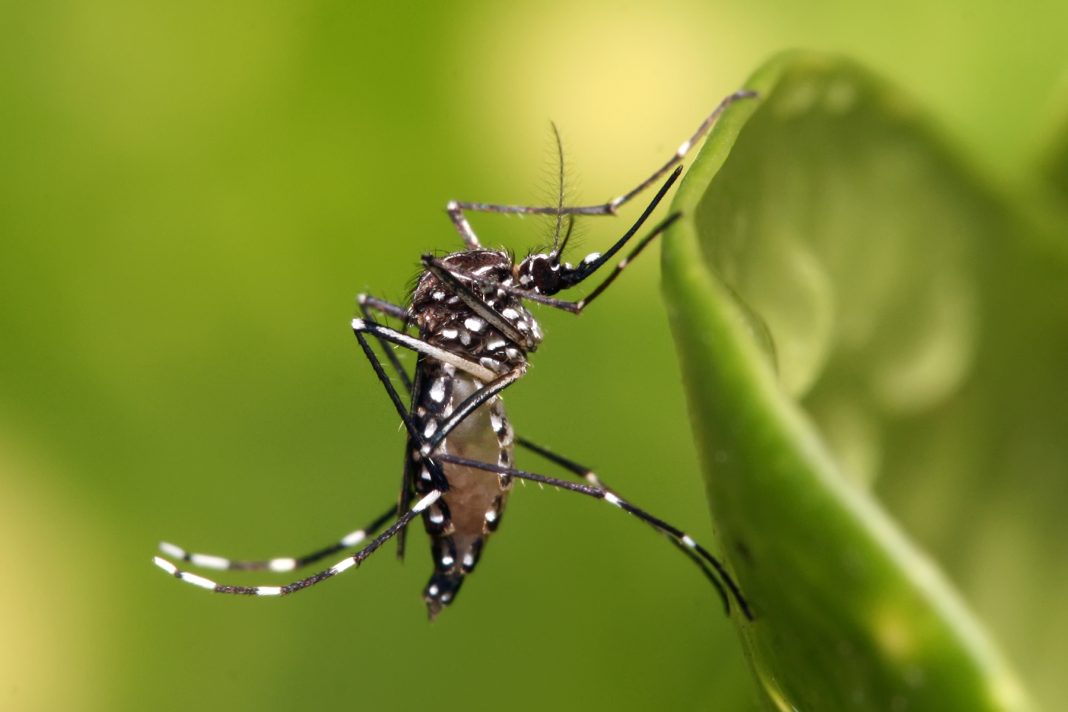The recent abundance of studies and ensuing data associated with the CRISPR genome editing system would lead some to believe that use of this technology is simple and straightforward for all models being utilized. Well, emerging science is rarely ever straightforward, and biology always seems to throw up new challenges for researchers. For instance, for researchers studying mosquito-borne diseases as well as those studying other arthropods CRISPR use is cumbersome and inefficient. Now, investigators at Penn State College of Agricultural Sciences have developed an innovative technology designed to improve CRISPR-Cas9 gene editing in mosquitoes and other arthropods.
Findings from the new study—published today in Nature Communications through an article titled “Targeted delivery of CRISPR-Cas9 ribonucleoprotein into arthropod ovaries for heritable germline gene editing”—shows that the technique succeeds with a high degree of efficiency while eliminating the need for difficult microinjection of genetic material.
The Penn State team is optimistic that their results could pave the way for scientists examining a wide range of arthropods—and even some vertebrates—to more easily manipulate gene expression for fundamental research and practical applications such as control of vector-borne diseases malaria, zika, and dengue, as well as elimination of agricultural insect pests, and potentially gene therapy for human and animal health.
Current approaches in arthropods rely on delivering the gene-editing Cas9 directly to eggs by embryonic microinjection, a difficult and inefficient process that works in only a small number of species. “In addition, microinjection can damage the eggs, and it requires expensive equipment and training to implement,” explains senior study investigator Jason Rasgon, Ph.D., a professor of entomology and disease epidemiology at Penn State University. “These restrictions dramatically limit the use of CRISPR-Cas9 technology across diverse species.”
![Using a newly developed method to deliver gene-editing material to the ovary of an adult mosquito, researchers disabled a gene that caused its offspring on the right to be born with white, rather than dark, eyes. [Rasgon laboratory, Penn State]](https://genengnews.com/wp-content/uploads/2018/08/177774_web5924147441-1.jpg)
“We developed a technology termed Receptor-Mediated Ovary Transduction of Cargo (ReMOT Control) to deliver Cas9 RNP to the arthropod germline by injection into adult female mosquitoes,” the authors wrote. “We identified a peptide (P2C) that mediates transduction of Cas9 RNP from the female hemolymph to the developing mosquito oocytes, resulting in heritable gene editing of the offspring with efficiency as high as 0.3 mutants per injected mosquito. We demonstrated that P2C functions in six mosquito species. Identification of taxa-specific ovary-specific ligand-receptor pairs may further extend the use of ReMOT Control for gene editing in novel species.”
Dr. Rasgon explained that during ovary and egg maturation, mosquitoes and other arthropods synthesize yolk proteins, which are secreted into the blood and taken up into the ovaries. The team hypothesized that molecules derived from these yolk proteins could be fused to Cas9 cargo and delivered into the egg at levels necessary to achieve genome editing in the embryo, bypassing the need for embryonic microinjection.
In the process of testing this hypothesis in Aedes aegypti, a mosquito that can spread pathogens such as dengue, chikungunya, zika, and yellow fever viruses, the team identified a peptide known as P2C, a ligand that is recognized by ovarian receptors and functions in five other mosquito species as well.
To visually show that P2C could achieve uptake in the ovary, the researchers injected the peptide, infused with green fluorescent protein, into mosquitoes. They subsequently found fluorescence in more than 98 percent of primary oocytes.
For gene-editing experiments, the scientists targeted a gene that, when knocked out, results in white eye color rather than dark, providing a visible phenotype to aid in screening. They found that P2C, when bonded with the Cas9 enzyme, was able to deliver the gene-editing cargo to the ovary, where the desired mutation was achieved at a high rate of efficiency, resulting in genetically modified offspring.
Interestingly, the results of the current study show that compared to embryo injection, gene editing by ReMOT Control is efficient and technically much easier to accomplish.
“Whereas the microinjection apparatus can cost thousands of dollars and require extensive training to use, the equipment for ReMOT Control injections costs approximately $2, and the technique can be learned in less than an hour,” Dr. Rasgon concludes. “The lower cost and ease of adult injections makes this method a substantial improvement over existing embryo-injection techniques, putting gene-editing capability into the reach of nonspecialist laboratories and potentially revolutionizing the broad application of functional arthropod genetics.”


